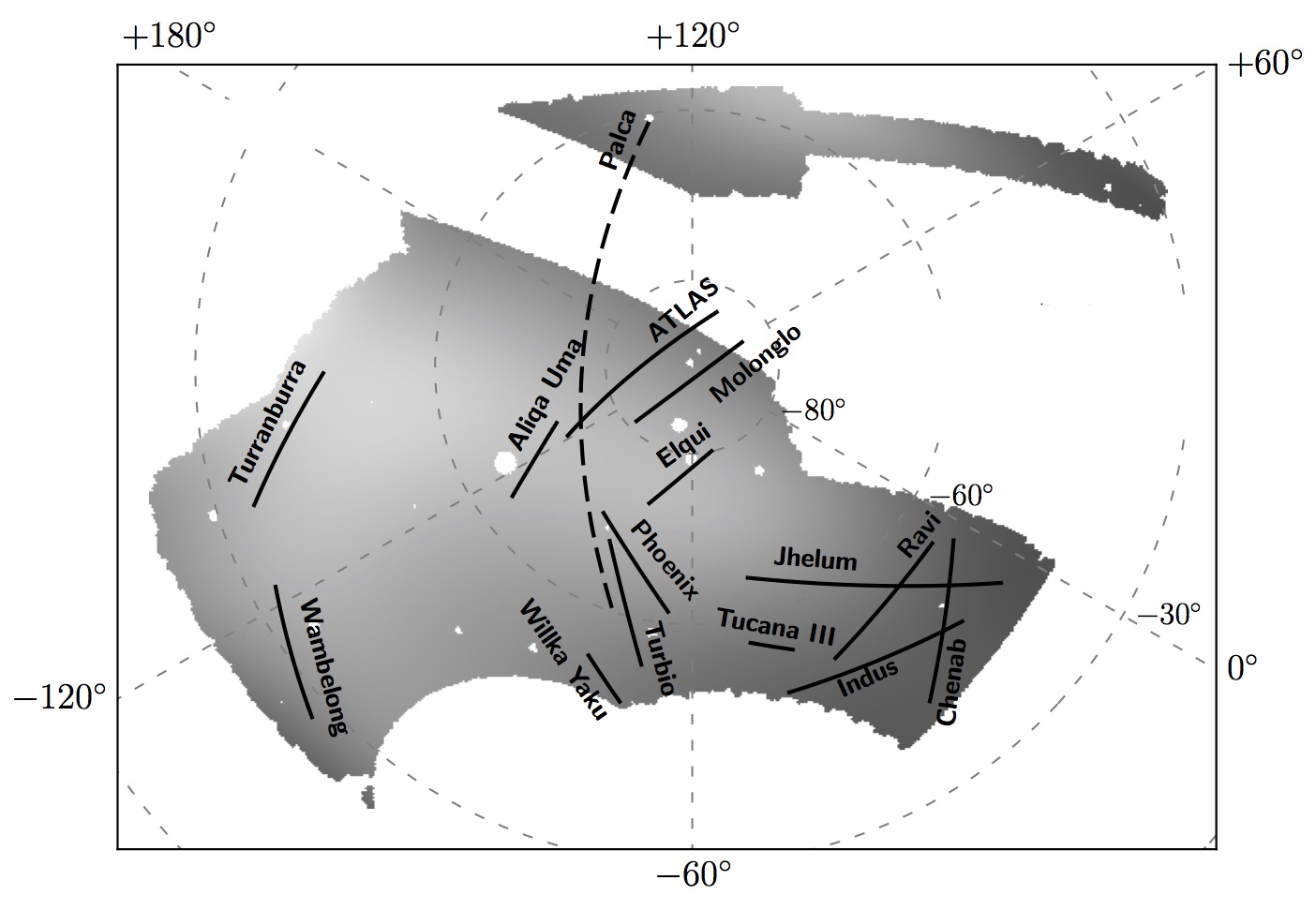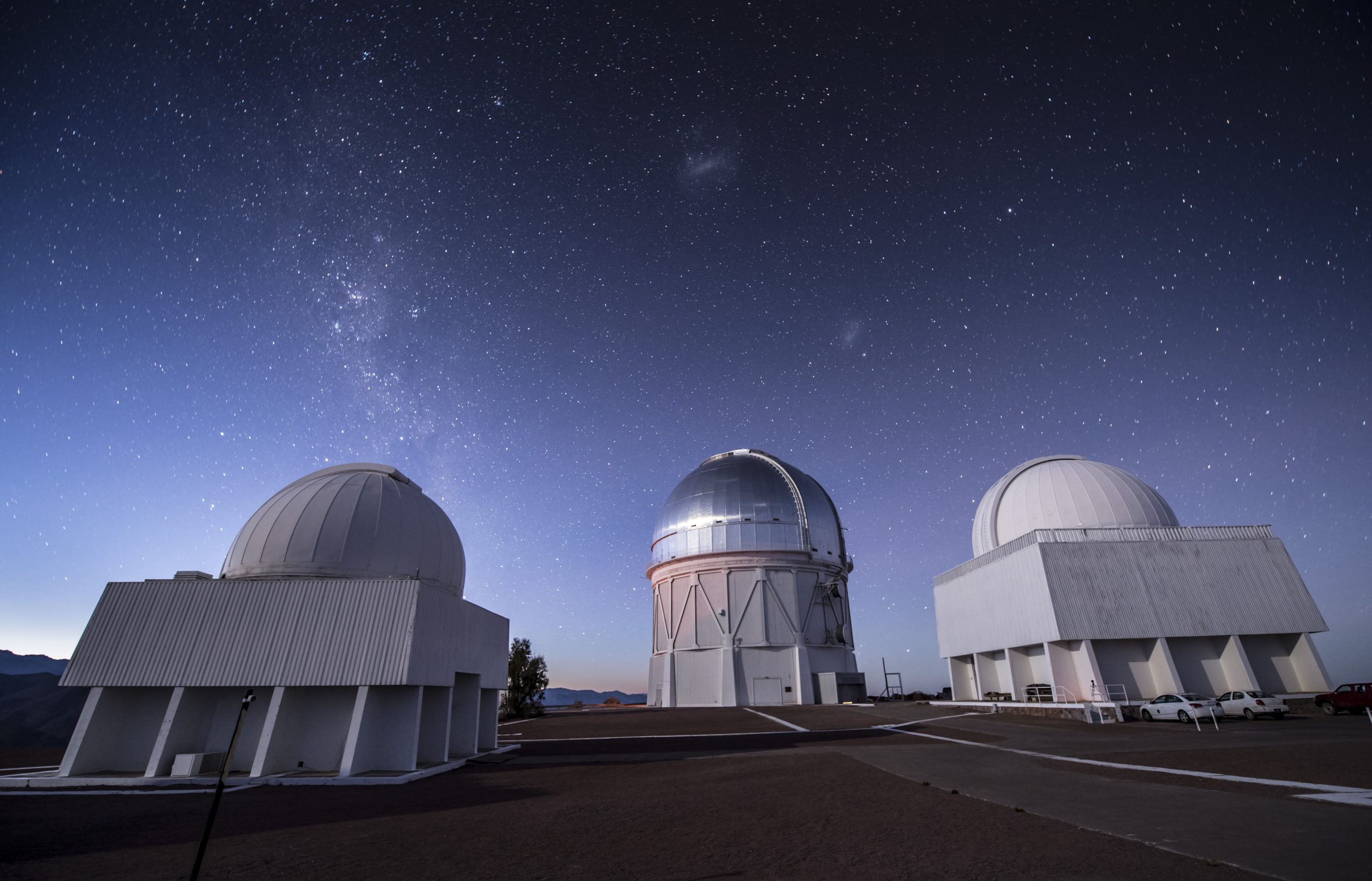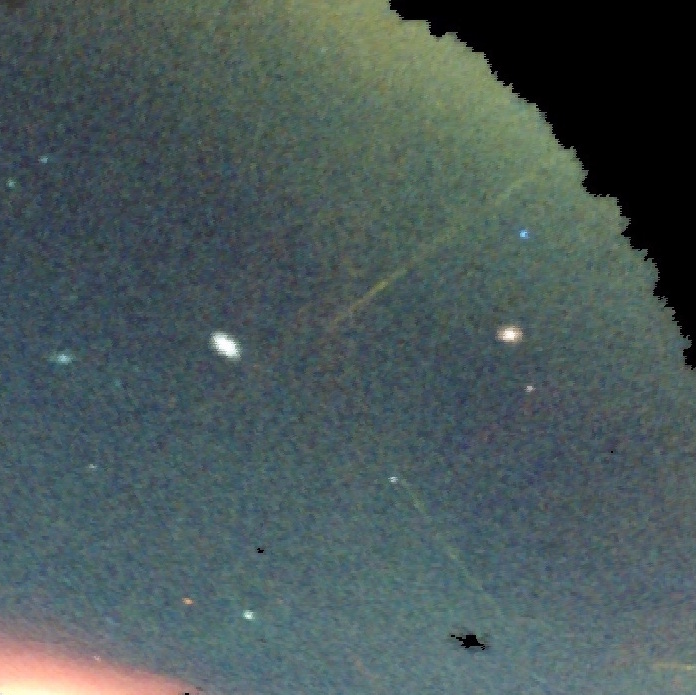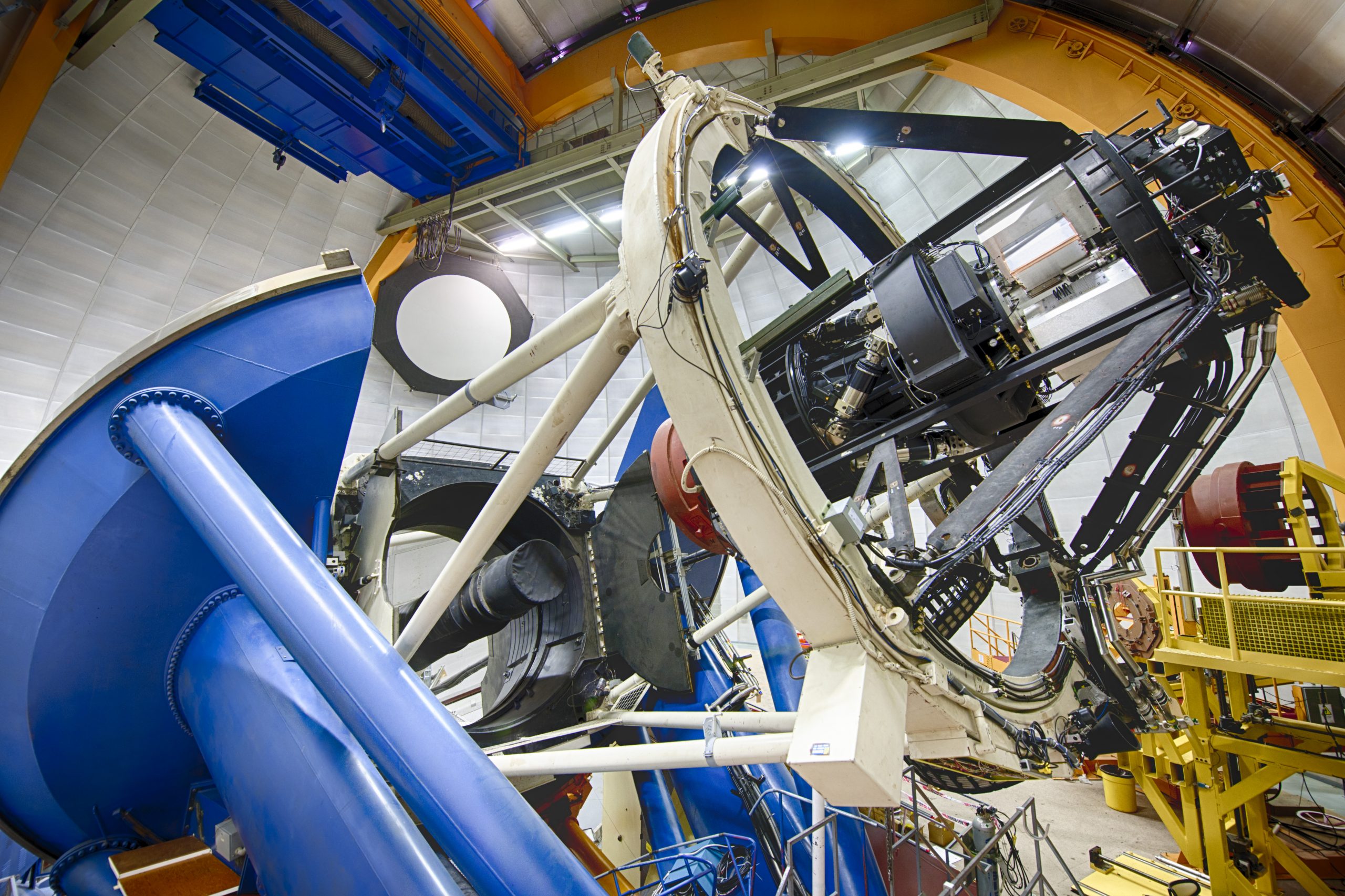Dark Energy Survey Publicly Releases First Three Years of Data
(Originally published by Fermilab)
January 10, 2018

At a special session held during the American Astronomical Society meeting in Washington, D.C., scientists on the Dark Energy Survey (DES) announced today the public release of their first three years of data. This first major release of data from the Survey includes information on about 400 million astronomical objects, including distant galaxies billions of light-years away as well as stars in our own galaxy.
DES scientists are using this data to learn more about dark energy, the mysterious force believed to be accelerating the expansion of the universe, and presented some of their preliminary cosmological findings in the special session. As part of that session, DES scientists also announced today the discovery of 11 new stellar streams, remnants of smaller galaxies torn apart and devoured by our Milky Way.
The public release of the first three years of DES data fulfills a commitment scientists on the survey made to share their findings with the astronomy community and the public. The data cover the full DES footprint – about 5,000 square degrees, or one-eighth of the entire sky — and include roughly 40,000 exposures taken with the Dark Energy Camera. The images correspond to hundreds of terabytes of data and are being released along with catalogs of hundreds of millions of galaxies and stars.
“There are all kinds of discoveries waiting to be found in the data. While DES scientists are focused on using it to learn about dark energy, we wanted to enable astronomers to explore these images in new ways, to improve our understanding of the universe,” said Dark Energy Survey Data Management Project Scientist Brian Yanny of the U.S. Department of Energy’s Fermi National Accelerator Laboratory.
“The great thing about a big astronomical survey like this is that it also opens a door to many other studies, like the new stellar streams,” added Adam Bolton, associate director for the Community Science and Data Center at the National Optical Astronomy Observatory (NOAO). “With the DES data now available as a ‘digital sky,’ accessible to all, my hope is that these data will lead to the crowdsourcing of new and unexpected discoveries.”
The DES data can be accessed online.

The Dark Energy Camera, the primary observation tool of the Dark Energy Survey, is one of the most powerful digital imaging devices in existence. It was built and tested at Fermilab, the lead laboratory on the Dark Energy Survey, and is mounted on the National Science Foundation’s 4-meter Blanco telescope, part of the Cerro Tololo Inter-American Observatory in Chile, a division of NOAO. The DES images are processed by a team at the National Center for Supercomputing Applications (NCSA) at the University of Illinois at Urbana-Champaign.
“We’re excited that this release of high-quality imaging data is now accessible to researchers around the world,” said Matias Carrasco Kind, DES release scientist at NCSA. “While DES was designed with the goal of understanding dark energy and dark matter, the huge amount of data in these images and catalogs will bring new scientific applications, challenges, and opportunities for discovery to astronomers and data scientists. In collaboration, NCSA, NOAO and the LIneA group in Brazil are providing the tools and resources to access and analyze this rich and robust data set.”
One new discovery enabled by the data set is the detection of 11 new streams of stars around our Milky Way. Our home galaxy is surrounded by a massive halo of dark matter, which exerts a powerful gravitational pull on smaller, nearby galaxies. The Milky Way grows by pulling in, ripping apart and absorbing these smaller systems. As stars are torn away, they form streams across the sky that can be detected using the Dark Energy Camera. Even so, stellar streams are extremely difficult to find since they are composed of relatively few stars spread out over a large area of sky.
“It’s exciting that we found so many stellar streams,” said astrophysicist Alex Drlica-Wagner of Fermilab, as well as a member of the Kavli Institute for Cosmological Physics (KICP) at the University of Chicago. “We can use these streams to measure the amount, distribution and clumpiness of dark matter in the Milky Way. Studies of stellar streams will help constrain the fundamental properties of dark matter.”
Prior to the new discoveries by DES, only about two dozen stellar streams had been discovered. Many of them were found by the Sloan Digital Sky Survey, a precursor to the Dark Energy Survey. The effort to detect new stellar streams in the Dark Energy Survey was led by University of Chicago graduate student Nora Shipp.
“We’re interested in these streams because they teach us about the formation and structure of the Milky Way and its dark matter halo. Stellar streams give us a snapshot of a larger galaxy being built out of smaller ones,” Shipp said. “These discoveries are possible because DES is the widest, deepest and best-calibrated survey out there.”

Since there is no universally accepted naming convention for stellar streams, the Dark Energy Survey has reached out to schools in Chile and Australia, asking young students to select names. Students and their teachers have worked together to name the streams after aquatic words in native languages from northern Chile and aboriginal Australia. Read more about the names in Symmetry magazine.
Read the papers drawn from the first years of DES data online. An animation of several of the newly discovered streams can be seen on Fermilab’s website.
DES plans one more major public data release, after the survey is completed, which will include nearly twice as many exposures as in this release.
“This result is an excellent example of how ‘data mining’ — the exploration of large data sets — leads to new discoveries,” said Richard Green, director of the National Science Foundation’s (NSF) Division of Astronomical Sciences. “NSF is investing in this approach through our foundation-wide ‘Harnessing the Data Revolution’ initiative, which is encouraging fundamental research in data science. We’re expecting a drumbeat of exciting discoveries, particularly when the Large Synoptic Survey Telescope data floodgates are opened!”
This work is supported in part by the U.S. Department of Energy Office of Science.
